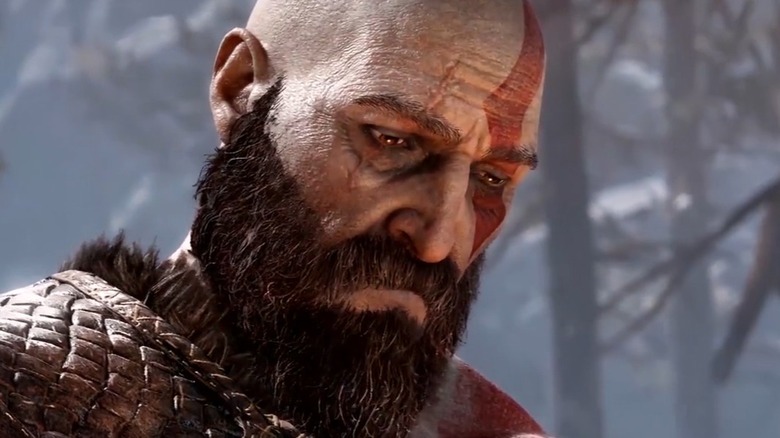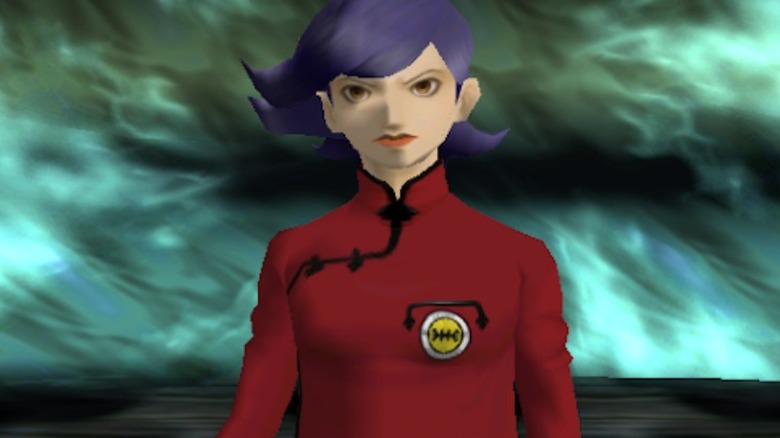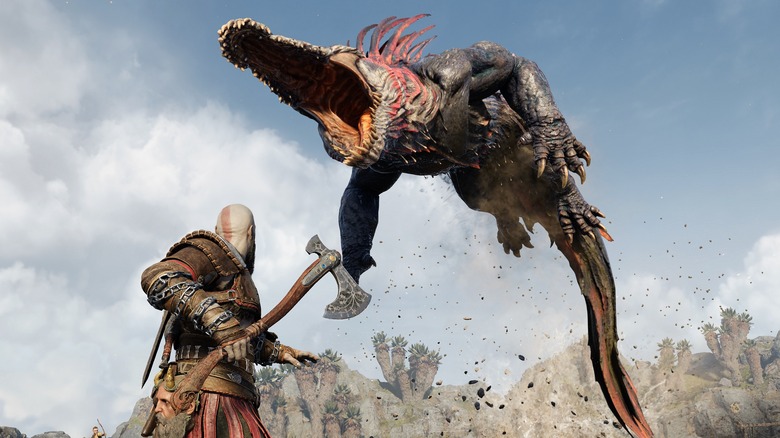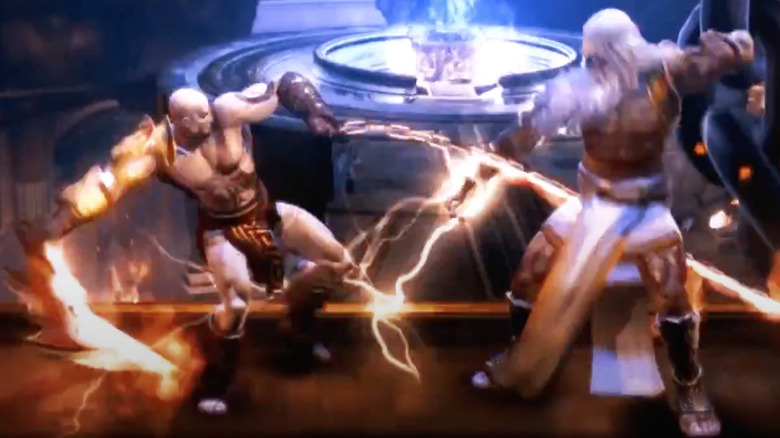God Of War Almost Looked Completely Different
Santa Monica Studios' "God of War" laid the groundwork for an action-packed series for years to come. David Jaffe, who directed "God of War," was part of the team for the first and second "God of War" games back in the early 2000s, when the series first established itself as a PlayStation franchise. "God of War" fans can thank him and his team for the characteristic qualities behind the series, like its savage third-person combat and grim, heart-pumping cinematics. However, it turns out that the game could've come from a completely different perspective.
In a recent video on his YouTube channel, Jaffe discussed how he originally envisioned "God of War" from a first-person perspective. He revealed some of the inspirations behind "God of War," how the game went from first to third person, and the different design challenges that the development team encountered throughout development. Although "God of War" eventually became the third-person action-adventure title it's known as today, Jaffe and his colleagues established the success of the series through their decisions.
Here's the story of how "God of War" almost looked completely different.
Why first person wouldn't work
Jaffe worked on the design for a first-person "God of War" for three to four months before eventually scrapping it. "Maken X," a Dreamcast hack-and-slash game, inspired his early ideas for "God of War." He said that, while "Maken X" isn't the world's best game, it was one of the few where he saw first-person melee combat done well. Still, the first person perspective couldn't reach the goals he had for the game in the end.
"I thought that would be a really cool way to differentiate ourselves," Jaffe said. "But I think, ultimately, it became difficult to get the kind of emotion and combat and character building that I was hoping to do."
Jaffe also doubted that his idea for a first-person "God of War" would've made it past Tim Moss, Santa Monica Studio's lead programmer. After all, if he couldn't sell himself on the idea and solutions to the problems he foresaw, how would he pitch it to someone else? As he described it, Moss saw "God of War" as a third-person game from the beginning. He, Moss, and another one of their colleagues didn't come to an agreement on camera perspectives until meeting in person and hashing out the details.
Design challenges of third person
Thankfully, the team soon settled on a third-person perspective after attending a conference in Last Vegas. Jaffe recalled how viewing a demo for either "Ico" or "Devil May Cry" unanimously got them to agree to use that game's camera perspective as an inspiration. This goes back to Jaffe's comments at the beginning of the video, where he mentioned both games inspiring the end product.
Third-person came with its own issues, though. Now the team needed a new way to ensure players could easily keep track of their character. Jaffe worried about players losing sight of Kratos in enemy-filled rooms like in "Marvel Ultimate Alliance," where the attacking characters blended into a room with multiple enemies. Players needed some kind of design to keep their eyes on their character.
Kratos' iconic Blades of Athena eventually became what the team used to solve this issue. However, the inspiration came from an unlikely source — Sega's now-defunct hack-and-slash adventure game series, "Shinobi."
How Kratos' chains solved everything
"Shinobi," a third-person action game that involved a protagonist with a flowing red scarf, inspired the idea behind Kratos' iconic blades. Jaffe played it during development, but he credited designer Joe Wright with the idea. The scarf made it nearly impossible to lose the character, even amidst hordes of enemies, because of its vibrant color. So, Wright suggested that they come up with a similar concept for Kratos to ensure he would be visible.
The Blades of Athena, Kratos' main weapons in the original "God of War," stood out amidst the bleak, gray world. They weren't quite as red as their inspiration, but the bright flashes of color they brought to the screen made it easy to differentiate Kratos from his attackers. From there, the idea spread into other aspects of development such as lore and mythology. Why did Kratos have these chained weapons? Why couldn't he take them off? It all intertwined with a bigger story in the "God of War" universe.
Jaffe might not be on the development team for "God of War" anymore but his influence can be seen in the newer works, too. "God of War: Ragnarok," the latest installment of the "God of War" series, will release sometime in 2022 for PlayStation 4 and PlayStation 5.




